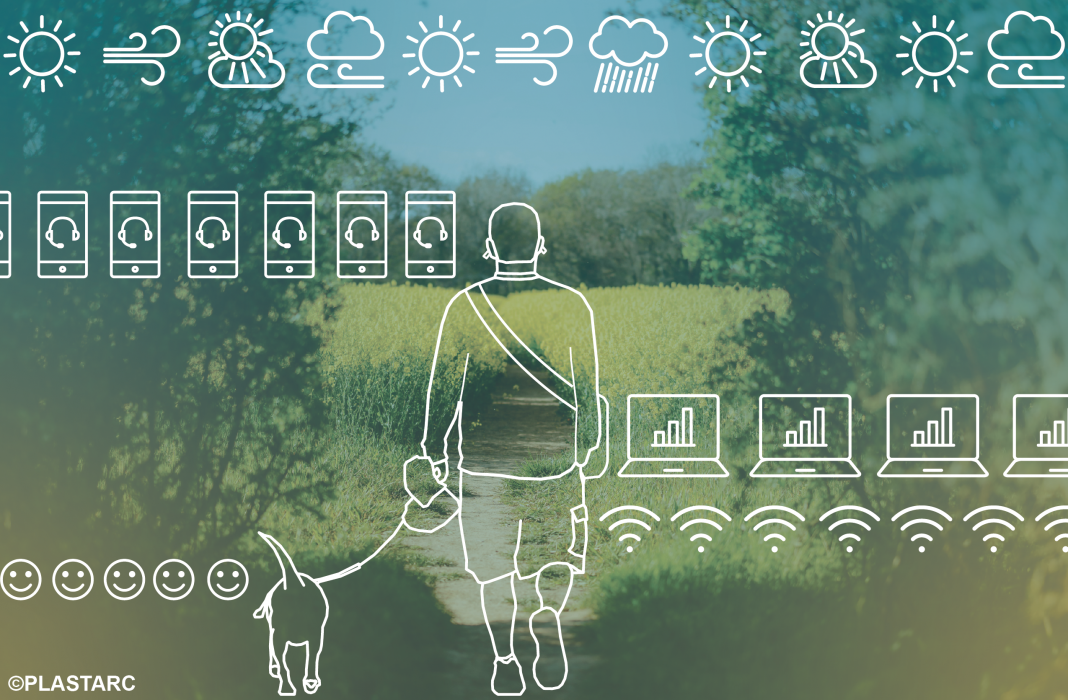What’s stopping you from working outside more often—and what would it take to change that?
As much as we may idealize and embrace the health benefits of the great outdoors, it’s still all-too-rare that we actually step outside and take in the fresh air while we’re at work. For many of us, there’s a clear division between where “work” and “leisure” can happen: Work, of course, is done in a designated office, though the definition of “office” has expanded in recent years to include alternative spaces (home offices, co-working spaces, etc.); whereas leisure activities like hiking or swimming are often best-suited for those outdoor spaces where we can enjoy the bounty of nature.
But what if our expanded understanding of the office could also include outdoor spaces? What if, instead of sitting (or standing) at a desk in air-conditioned rooms, we could finish the same tasks from a bench basking in the sunlight? How can we make work outdoors a staple of our daily lives, rather than an exception?
Being outdoors is etched into our DNA: For more than 99% of our species’ existence, we’ve done everything in nature, including the original “work,” which was really just basic self-preservation and sustenance. Dating back to the first homo sapiens 300,000 years ago, endless hours were spent hunting and gathering, until that form of outdoor labor was slowly replaced about 12,000 years ago by other, more efficient forms of outdoor work: agriculture and animal domestication. During this time, the human body and mind evolved in numerous ways to account for the time people spent outside:
- Our circadian rhythms were aligned with the sunrise and sunset.
- Our eyes adjusted to see most clearly in broad-spectrum daylight.
- Our bodies became versatile enough for vigorous movement throughout the day.
- Our brains became accustomed to organic, unpredictable multi-sensory stimulation.
It wasn’t until the Industrial Revolution in the late 18th century that parts of the world started to move work indoors. Even then, the absence of certain amenities – namely, strong artificial lighting – necessitated the incorporation of outdoor elements into the workplace. The first factories to exist, such as textile mills, tried to tear a few pages out of nature’s book by featuring large windows to maximize natural light and ventilation, but these early renditions were a far cry from the actual thing.
As modern technology continued to evolve, it offered an increasingly complete simulacrum of nature’s essential amenities:
- Artificial lighting took the sun’s place and defied its natural rhythms,
- HVAC took care of our ventilation needs,
- Chairs and desks enabled us to remain seated for hours on end
- Screens gave us something far smaller and flatter to focus on than the fields we once tilled.
With the emergence of the 9-to-5 office lifestyle, and all the sensory monotony it entails, we’ve witnessed the rise of new conditions, like Nature-deficit disorder and psychoterratica, that can result in chronic psychological, behavioral, and physical ailments, from unhealthy posture to poor sleep habits. Some design principles, such as biophilic design, ergonomic office furniture, and Activity-Based Working, have emerged to mitigate these impacts, but there’s truly no proper replacement for the outdoors itself.
How, then, can we find a way to merge our daily office grind and our biological need for outdoor stimulation, without compromising our daily expectations? What are the main obstacles standing in our way, and what are the most inventive tools for overcoming them?
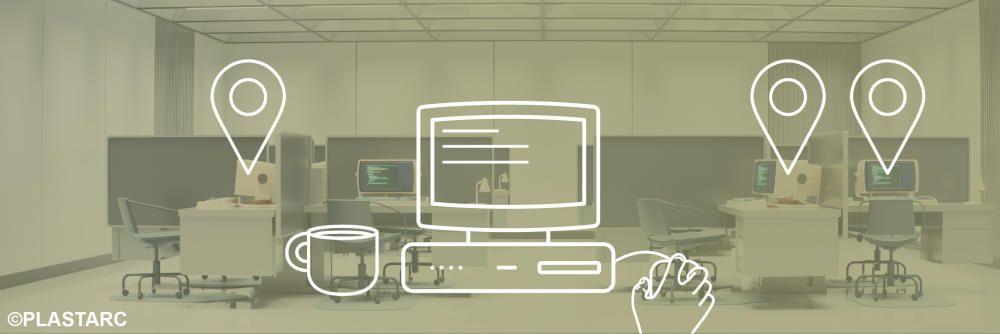
The Indoor Default
Over the past six years, our understanding of the office has undergone a broad and necessary paradigm shift. Whether in-person or from home, office workers are more able than ever before to work both where and when they want – since 2019, for instance, the ratio of working days completed from home has skyrocketed from 5% to 30%. But our collective understanding of the office (at least in the context of knowledge work) has not yet expanded to include the outdoors. As of November 2024, the Bureau of Labor Statistics estimates that only 4.1% of office and administrative support occupations include exposure to the outdoors.
This unfortunate truth is that these jobs have evolved with the implicit expectation that desk work, regardless of where it takes place, must be done at a desk. But what if the same principle that’s inspired the widespread adoption of biophilic design – that a more organic work environment, featuring natural light and multisensory stimuli, can inspire us to be happier, healthier, and therefore more productive – could be expanded to foster more time outside?
Beyond our collective habituation, there are a few clear barriers that continue to impede our intention to work outside. Let’s take a look at them, and consider some simple solutions.
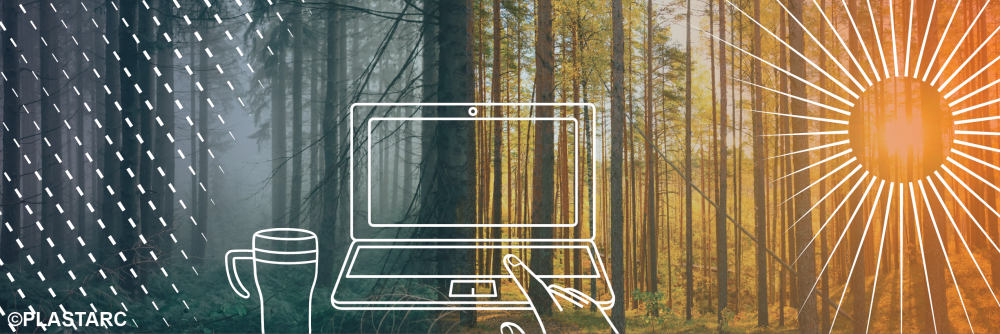
Exposure to the Elements
Our workspaces may be transforming, but our dependence on computers has remained constant. The necessity of laptops presents a few quandaries:
- How can we work outside when our laptops are designed to perform in climate-controlled spaces? This becomes especially troubling as our natural climate continues to heat up, especially in tech hubs like Austin, Miami, and San Francisco.
- Trying to gaze at most monitors under the glare of direct daytime sunlight can exacerbate eye strain.
- Of course, there’s always the possibility of precipitation, which brings its own (potentially disastrous) problems.
One simple, elemental solution – shade – does a lot to account for all three of these problems. By reducing our exposure to sunlight, shade helps us see our screens more easily, and it reduces ambient temperatures by as much as 15-20 degrees. It also offers some degree of protection from precipitation. For those of us working from home, there are plenty of affordable solutions that can help us create reliably shady spaces – from patio umbrellas to canopy chairs – that we can use at least during the early mornings and late afternoons.
Other, more specific solutions to the problem of screen glare – which can often persist even in the shade – include:
- A laptop hood or shade
- Anti-glare or matte screen protectors
- High-brightness OLED monitors that are designed to remain visible even in the most well-lit environments.

Absence of Amenities
Outdoor spaces often lack amenities that are easily found indoors: power outlets, reliable wi-fi, ergonomic seating, work surfaces, noise control, and, of course, restrooms. For each of these problems, there is a somewhat straightforward technological solution:
- Portable chargers can extend a laptop’s battery life by several hours
- Wi-fi extenders or signal boosters and routers can facilitate internet access.
- Ergonomic seat cushions and lap desks can passably emulate the office’s most essential furnishings.
It’s possible to piece together an ensemble of gadgets and infrastructure that allows for maximal time spent outdoors, but the truth is that time indoors isn’t the problem in-and-of-itself. Rather, it’s the unchecked excess of time inside that can cause anything from a weakened immune system to poor sleep habits. Even periods of 20 minutes spent outside have been shown to measurably improve well-being and counter the health impacts of a traditional 9-to-5 office lifestyle. Other studies have shown that an hour spent interacting with nature can improve memory and attention metrics by 20%. Instead of swinging completely in the opposite direction, then, the best and most practical solution is in identifying which tasks can most easily be done outside, preferably while in motion, and finding ways to make that possible for discrete periods of time.
During an engagement with the National Park Service at Grand Teton, we had the pleasure of observing several healthy workplace policies, including one-on-one meetings that were held during walks together outside, and larger meetings around shaded picnic tables. Since these meetings only required the people who comprised them, the infrastructural lift was minimal. Perhaps most perplexing, though, is that NPS had these policies in place almost 20 years ago – now that technological solutions like mobile recording and transcription apps are readily available to take care of notetaking, we believe outdoor meetings should be far more popular than they are today.
The Swimmable Commute
Optimizing your outdoor exposure during the workday doesn’t need to be limited to time spent while explicitly working – how you get to and from your workplace also accounts for a large portion of the day. We’ve written in the past about the mental and physical health benefits of bikeable and walkable commutes, but the recent Swimmable Cities Summit in Rotterdam reminded us that swimmable commutes are already the wave of the future in major cities like Paris, Berlin, and Copenhagen. Underway infrastructural changes in each of these cities are designed to enable people to reap swimming’s health benefits, simply as part of their daily trips to and from work.
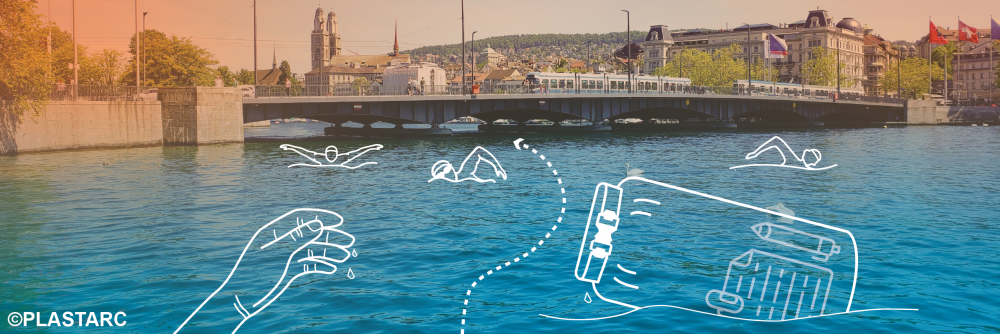
The Benefits
By spending even small amounts of our workday outside, we can do wonders for our physical and psychological health:
- Direct exposure to sunlight early in the day is shown to increase cortisol levels, resulting in increased immune function and alertness
- The ever-changing and unpredictable stimuli that come with outdoor exposure can enhance our creativity
- Time spent in the sunlight also resets our circadian rhythms, which enables deeper sleep and more energy throughout the day.
All of this, in turn, pays dividends at work by fostering greater job satisfaction and heightened productivity. Towards this end, it’s time to literally think outside the box, and use time outside – even in small increments! – to embrace our most primal evolutionary needs and foster a happier, healthier, redefined “office.”
Ready to work outside?
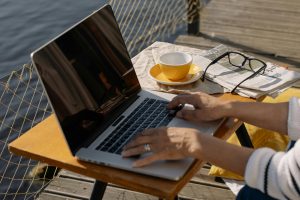 To help, the Work Design staff has rounded up a collection of our favorite outdoor-friendly work tools and upgrades designed to make working outside easier, more comfortable, and more productive. Check them out here
To help, the Work Design staff has rounded up a collection of our favorite outdoor-friendly work tools and upgrades designed to make working outside easier, more comfortable, and more productive. Check them out here

